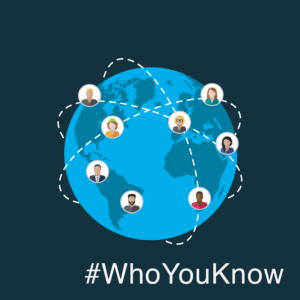This month, U.S. high schools got a healthy dose of innovation investment—the XQ Super School project announced 10 winners, each of which will receive $10 million to support their efforts to reinvent high school. Although the winners are pursuing a pretty dazzling array of approaches, all 10 are exploring ways to personalize high school in an effort to crack open the monolithic model of cohort and age-based instruction that undergirds traditional school.
But across their diverse models, there’s another common, if not subtler, effort afoot: to invest in students’ relationships and networks. As Eric Tucker, head of the winning Brooklyn Lab, said, “What we’re committed to doing is making sure that the school is the connector.” And as a school leader at another winner, Washington Leadership Academy (WLA), noted, relationships rank among the school’s top four values: “Building strong relationships between, staff, students, families, and our local and global community is core to our work at WLA.”
There’s a powerful message underlying this commitment: If high schools are going to step up to the 21st century and level the playing field of opportunity, then they can’t focus on students’ human capital alone; they have to invest in students’ social capital as well. Human capital refers to what people can do—their skills and dispositions—that they can, in turn, convert into labor market returns down the line. Social capital, on the other hand, refers to the reservoir of relationships that people can bank on for supports or opportunities. Social capital is not singular in its benefits. As MIT Professor and Ford Foundation Vice President Xavier de Souza Briggs aptly put it, “Individuals of all backgrounds need a two-sided treasure chest of social capital: access to social support that helps us cope with life’s stresses and challenges (‘get by’) and access to social leverage, the key to mobility or ‘getting ahead.’” In other words, people—especially young people—need relationships that provide critical care, supports and encouragement. They also need relationships that can connect them to new opportunities—like jobs, ideas and learning experiences—that are otherwise beyond their reach.
Many of the XQ winners are pioneering a critical vision of school that focuses not just on what students know, but also on whom they know. These schools are designing programs that go beyond merely delivering academic content and skills and are acknowledging that relationships figure mightily into the opportunity equation in our country.
If innovation theory is our teacher, however, then these schools will need to protect new approaches to seeding relationships from old incentives and metrics that focus on traditional high school outcomes like grades, credits, graduation rates, and postsecondary opportunities. Based on my research on other schools and organizations attempting this work, there are three key ways to approach these innovations:
1. Treat relationships as an outcome, not just an input. How these innovations develop over time will depend on how we measure outcomes. I’ve written about before, the mentoring space has worked long and hard to become part and parcel of the project of schools—more and more mentoring efforts are stepping up to help ensure that students stay in school, earn good grades, and make it to and through college. Similarly, for schools emphasizing “real-world” learning in their communities, interactions with experts and community members are typically measured merely in terms of high school credit hours.
But if we only invest in relationship-building models that excel at meeting existing education metrics—high school graduation rates, credits, test scores, college access and success—then we may get better and better at intervening in systems designed to build human capital, but we will not actually break open a system that lends itself to forging new relationships at scale, much less providing the same depth and breadth of useful and supportive relationships to poor students that their wealthier counterparts enjoy. Such models, in turn, are unlikely to cure chronic network gaps between rich and poor. Instead, we’d expect to see a narrowing of interactions to deliver on just some of the value those relationships offer. Schools committed to bolstering students’ networks should therefore value relationships unto themselves. This means keeping track of—and encouraging students themselves to keep track of—the constellation of relationships in students’ worlds. A healthy array of connections in and beyond the school community itself should be a metric to optimize against.
2. Acknowledge homophily as a real phenomenon—and a potential tool to reshape networks. One of the most powerful forces that shapes our social networks is homophily or, as it’s often described, the tendency for “birds of a feather to flock together.” Homophily describes the fact that people tend to build strong ties with those who are like them. Often this like-attracts-like phenomenon falls along demographic lines like race, religion, gender, and education level (notably race and religion have remained relatively constant in terms of apparent importance, whereas gender shows decreasing salience and education level has become more salient.) In education, homophily reflects promising practices like using near-peer mentors and coaches with whom students can identify, which in turn produces more trusting relationships.
An awareness of homophily should inform how schools go about helping students build networks. This does not mean that schools should merely recruit mentors and coaches who “look like” their students—it does mean, however, that simply expanding access to a diverse pool of new relationships may not be enough. Rather, effective programs will help curate interactions that establish common ground between students and new adults (be that by demographic factors or other factors like interests, personality traits, shared experiences) that form the foundation of trusting, lasting relationships.
3. Leverage technology to expand networks. Schools need not start from scratch in efforts to expand students’ networks——they should embrace a small but growing market of technology companies that are facilitating and coordinating relationships. They can also look to the quickly expanding array of corporate mentoring tools designed to forge connections within and beyond companies. Crucially, these tools leverage technology to defy stubborn geographic boundaries that have kept schools closed off and relationships out of reach, particularly for students in isolated neighborhoods or remote rural regions. And for those schools looking to seed face-to-face interactions, a number of new platforms are emerging that aim to better align the supply of relationships throughout a community with demand in schools. These platforms, in turn, can bring experts and community members into classrooms in the flesh on a more regular basis than our traditional “school visitor” models have in the past.
If XQ winners can successfully expand and nurture students’ stock of social capital, then they have the potential to fundamentally disrupt the monopoly that neighborhoods—and tightly sealed off high school campuses—have held on students’ networks for over a century. As such, they’ll not just be super schools, but super hubs, tackling an often-ignored half of the opportunity equation in our country.
For more, see:




